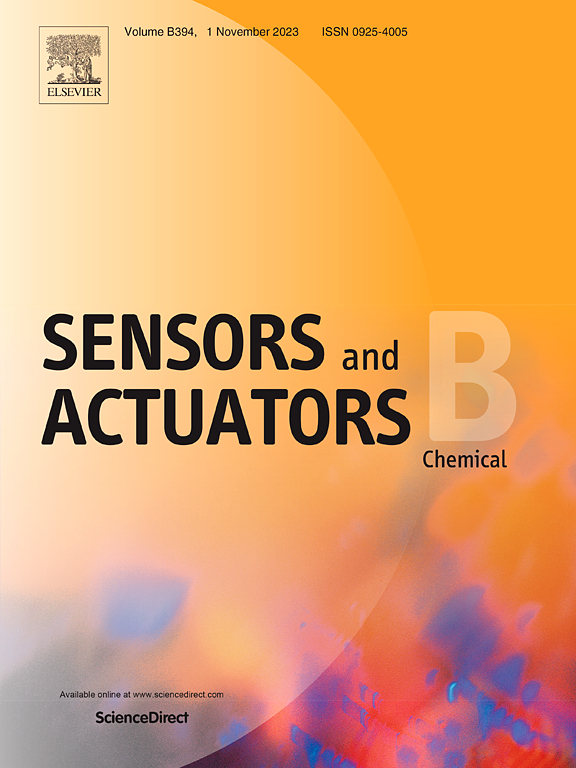Biomass-derived graphitic carbon/MoO3 nanosheets-crosslinked tubes for high response and rapid detection of butyl mercaptan at low temperatures
IF 8
1区 化学
Q1 CHEMISTRY, ANALYTICAL
引用次数: 0
Abstract
The fabrication of gas sensors for monitoring volatile organic sulfur compounds has currently gained wide concerns, but no related works on butylmercaptan (BM) were reported. Herein, two types of MoO3 materials were prepared by simple immersion of willow branch slices in ammonium molybdate water/acetonitrile solution followed by air calcination. The GC/MoO3 nanosheets-crosslinked tubes obtained from calcining precursor at 450 °C involve 5.45 wt% biomass-derived graphitic carbon (GC), and possess multi-level mesopores, large specific surface area and abundant oxygen vacancy defects. These structural features can increase the electroconductivity and percentage of oxygen species adsorbed on sensing surface, promote the rapid transport and adsorption of reducing BM molecules in sensing layer. Under the catalytic synergy of surface Mo6+ ions, highly sensitive detection of harmful BM gas by semiconductor sensor at different low temperatures is achieved for the first time. At near room temperature of 50 °C, GC/MoO3 sensor realized a response value (RV) of 174.8 for 50 ppm BM and it also had a good response (RV = 79) to the same concentration of BM at 92 °C. Meanwhile, it possessed reversible response-recovery and other good overall sensing performances. In addition, the low-temperature sensing mechanism of enhanced BM was analyzed in combination with DFT calculation.

求助全文
约1分钟内获得全文
求助全文
来源期刊

Sensors and Actuators B: Chemical
工程技术-电化学
CiteScore
14.60
自引率
11.90%
发文量
1776
审稿时长
3.2 months
期刊介绍:
Sensors & Actuators, B: Chemical is an international journal focused on the research and development of chemical transducers. It covers chemical sensors and biosensors, chemical actuators, and analytical microsystems. The journal is interdisciplinary, aiming to publish original works showcasing substantial advancements beyond the current state of the art in these fields, with practical applicability to solving meaningful analytical problems. Review articles are accepted by invitation from an Editor of the journal.
 求助内容:
求助内容: 应助结果提醒方式:
应助结果提醒方式:


